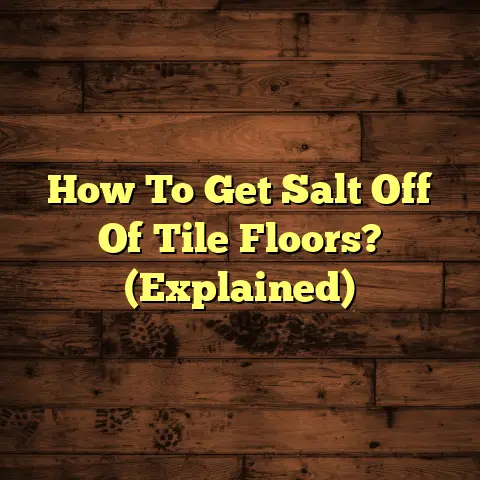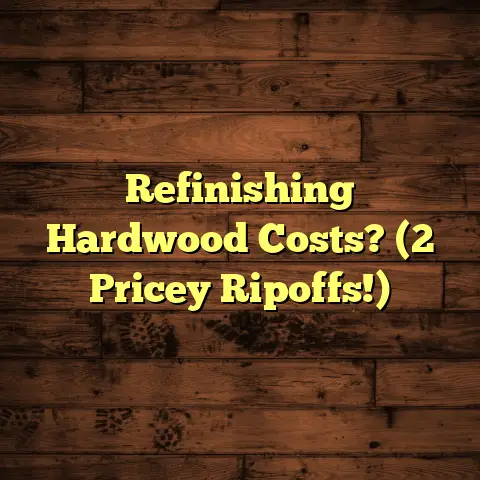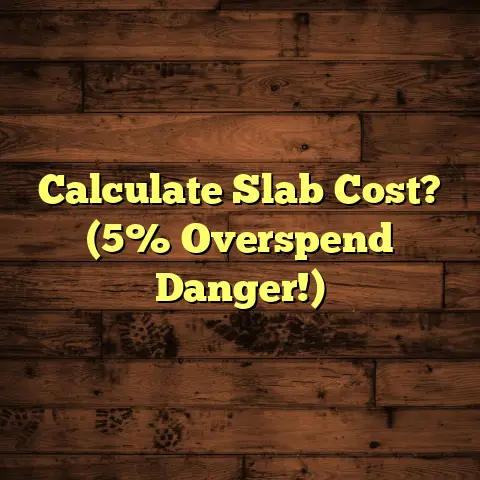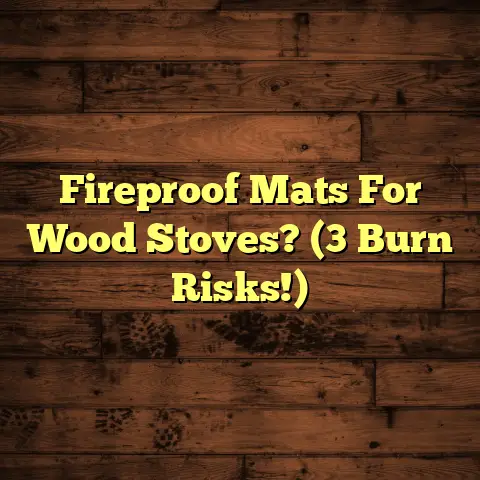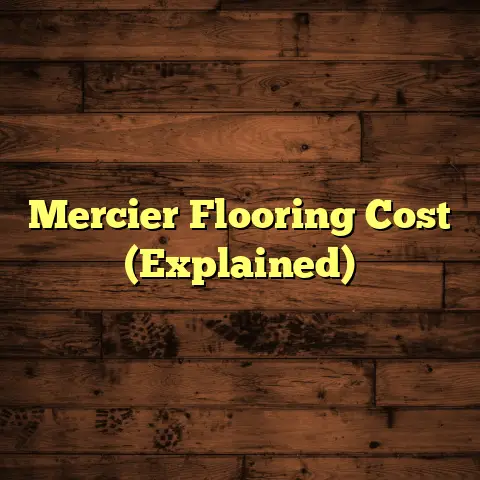Vacuum on Wood Floors: Safe or Risky? (5 Vacuums to AVOID!)
Let’s talk about something near and dear to my heart – and probably yours too: wood floors.
I mean, isn’t there something just magical about a freshly polished hardwood floor, gleaming in the sunlight?
It’s like the heart of the home, right?
But then reality hits:
how do we keep these beauties clean without wrecking them?
I get it.
I’ve been there, staring at a mountain of vacuum
options, each promising to be the “perfect” solution.
And let me tell you, I’ve seen firsthand what happens when the wrong vacuum meets a delicate wood floor.
Scratches, marks, a dull finish – it’s a flooring contractor’s nightmare, and a homeowner’s heartache.
I once had a client, Sarah, who was so proud of her new
hardwood floors.
She’d splurged on what she thought was the
ideal vacuum, based on online reviews.
A few months later, she called me in a panic.
The vacuum
had left swirl marks all over her floors!
It broke my heart.
That’s why I’m writing this – to help you avoid Sarah’s
mistake.
Let’s dive into the world of wood floors and
vacuums, and find out which ones are friends and foes.
1. Understanding Wood Floors and Their Vulnerabilities
First things first, not all wood floors are created equal.
We’ve got hardwood, engineered wood, and laminate, and each
has its own personality and quirks.
Hardwood: Think oak, maple, cherry – the real deal.
It’s gorgeous, durable, and can last for generations if
treated right.
But it’s also the most sensitive to scratches
and moisture.
Engineered Wood: This is like hardwood’s cooler, more
laid-back cousin.
It has a layer of real wood on top of a
plywood core, making it more resistant to moisture and
temperature changes.
Still needs TLC, though!
Laminate: The budget-friendly option.
It’s basically a
photorealistic image of wood glued to a composite core.
Tough, but not as luxurious as the real thing.
And trust me,
you really don’t want to scratch it, as repairs are tricky.
Why Proper Cleaning Matters
So, why all the fuss about cleaning?
Well, wood floors are
porous.
That means they can absorb dirt, dust, and grime,
which can dull the finish and lead to scratches over time.
Think of it like this: every speck of dirt is a tiny
abrasive, slowly sanding down your beautiful floor with each
footstep.
Yikes!
And let’s not forget about moisture.
Too much water can warp
the wood, causing it to swell and buckle.
Not a pretty sight.
Common Wood Floor Woes
I’ve seen it all:
- Scratches: The bane of every wood floor owner’s existence. They can be caused by anything from pet claws to dragging furniture.
- Dents: Ouch! Dropping heavy objects can leave permanent marks.
- Loss of Finish: Over time, the protective coating on your floors can wear away, leaving them vulnerable to damage.
2. The Vacuum Dilemma: Why Choosing the Right Tool Matters
Now, let’s talk vacuums. The market is flooded with options: upright, canister, robotic, stick – it’s enough to make your head spin!
Vacuum Varieties: A Quick Rundown
- Upright Vacuums: The classic choice. Powerful and great for carpets, but can be bulky and difficult to maneuver on wood floors.
- Canister Vacuums: These have a separate body and wand, making them more versatile and easier to get into tight spaces.
- Robotic Vacuums: The lazy person’s dream! They roam around and clean automatically. But their suction power can be limited.
- Stick Vacuums: Lightweight and cordless, perfect for quick cleanups. But they may not have the oomph for deep cleaning.
Features That Make or Break a Vacuum
So, what makes a vacuum wood-floor friendly? Here’s what to look for:
- Brush Type: This is HUGE. Avoid vacuums with stiff bristles or beater bars, as they can scratch the finish. Look for soft brush rolls or even better, a vacuum with a “bare floor” setting.
- Suction Power: Too much suction can actually damage wood floors by pulling up the finish. Look for a vacuum with adjustable suction settings.
- Weight: Heavy vacuums can leave dents, especially on softer woods like pine. Opt for a lightweight model.
The Price of a Bad Choice
I know what you’re thinking: “It’s just a vacuum, how much damage can it really do?” Well, according to a study by the National Wood Flooring Association (NWFA), improper cleaning methods are a leading cause of wood floor damage.
And I’ve seen the results firsthand.
I once had a client who
used a regular upright vacuum on her brand-new hardwood
floors.
Within a year, they were covered in scratches and
the finish was completely dull.
The cost to refinish?
Thousands of dollars!
3. The Risks of Using the Wrong Vacuum
Let’s get down to the nitty-gritty.
What exactly can
happen if you use the wrong vacuum on your wood floors?
Scratch City
This is the most common problem.
Stiff bristles and beater
bars act like sandpaper, grinding away at the finish with
every pass.
Over time, you’ll end up with a floor that looks
like it’s been attacked by a swarm of angry cats.
Gouges and Dents
Heavy vacuums, especially those with hard wheels, can leave
dents and gouges, particularly on softer woods.
And trust
me, those are a pain to fix.
Finish Fiasco
Excessive suction can actually pull up the finish, leaving
your floors vulnerable to moisture and damage.
You might not
notice it at first, but over time, your floors will start to
look dull and lifeless.
Real-Life Horror Stories
I’ve already shared Sarah’s story, but here’s another one.
My friend, Mark, bought a robotic vacuum thinking it would
be a set-it-and-forget-it solution.
But the vacuum kept
bumping into his furniture, leaving scratches and dents on
both the furniture and the floors.
Success Stories
But it’s not all doom and gloom!
I have plenty of clients who
have kept their wood floors looking pristine for years by
using the right cleaning methods and the right vacuums.
The
key is to be gentle, use the right tools, and avoid harsh
chemicals.
4. Introducing the Five Vacuums to Avoid
Alright, let’s get to the heart of the matter.
Based on my
experience and countless user reviews, here are five vacuums
that I would strongly recommend you avoid using on your
wood floors:
1. Hoover WindTunnel T-Series Rewind Plus Upright Vacuum
- Overview: A popular upright vacuum known for its powerful suction and multi-floor capabilities.
- Key Features: The “WindTunnel” technology promises superior dirt removal, but the stiff bristles on the brush roll can be too aggressive for delicate wood floors.
- User Reviews: Many users have complained about the vacuum leaving scratches and swirl marks on their hardwood floors. One reviewer on Amazon wrote, “This vacuum chewed up my hardwood floors! I now have visible scratches everywhere.”
- Conclusion: While it might be great for carpets, the Hoover WindTunnel T-Series is a no-go for wood floors.
2. Dyson Ball Animal 2 Upright Vacuum
- Overview: Another powerful upright vacuum designed for pet owners.
- Key Features: The Dyson Ball technology makes it easy to maneuver, but the brush head is not designed for wood floors.
- User Reviews: Several users have reported that the Dyson Ball Animal 2 left scratches and marks on their hardwood floors, even when used on the “bare floor” setting. A reviewer on Consumer Reports noted, “The suction is so strong that it can actually damage wood floors.”
- Conclusion: Despite its popularity, the Dyson Ball Animal 2 is not a good choice for wood floors.
3. Bissell CleanView Swivel Rewind Pet Reach Vacuum
- Overview: A budget-friendly upright vacuum marketed towards pet owners.
- Key Features: The “Swivel Steering” makes it easy to navigate around furniture, but the brush roll is not gentle enough for wood floors.
- User Reviews: Many users have complained about the Bissell CleanView leaving scratches and swirl marks on their hardwood floors. One reviewer on Walmart.com wrote, “This vacuum destroyed my floors! I wish I had read the reviews before buying it.”
- Conclusion: The Bissell CleanView Swivel Rewind Pet Reach is a budget-friendly option, but it’s not worth the risk of damaging your wood floors.
4. Shark Navigator Lift-Away Professional NV356E
- Overview: A versatile upright vacuum that can be converted into a handheld vacuum.
- Key Features: The “Lift-Away” feature makes it easy to clean stairs and upholstery, but the brush roll can be too aggressive for wood floors.
- User Reviews: Some users have reported that the Shark Navigator Lift-Away left scratches and marks on their hardwood floors, even when used on the “bare floor” setting. A reviewer on Target.com wrote, “This vacuum scratched my floors within the first week of using it.”
- Conclusion: While it’s a versatile vacuum, the Shark Navigator Lift-Away is not the best choice for wood floors.
5. Roomba 694 Robot Vacuum
- Overview: A popular robotic vacuum that promises to clean your floors automatically.
- Key Features: Convenient and easy to use, but the suction power is often insufficient for deep cleaning, and the hard plastic wheels can scratch wood floors.
- User Reviews: Some users have reported that the Roomba 694 left scratches and marks on their hardwood floors, especially around furniture legs. A reviewer on Best Buy wrote, “This vacuum scratched my floors and bumped into everything. I returned it immediately.”
- Conclusion: While it’s a convenient option, the Roomba 694 is not the most effective or safest choice for wood floors.
5. Conclusion: The Impact of Choosing Wisely
So, there you have it – five vacuums that I would avoid like the plague if you want to keep your wood floors looking their best.
I know, choosing the right vacuum can be a daunting task.
But it’s an investment that will pay off in the long run.
By selecting a vacuum that is specifically designed for wood
floors, you can protect your investment and keep your floors
looking beautiful for years to come.
Think about it: a few extra dollars spent on the right vacuum now can save you thousands of dollars in refinishing costs down the road.
And more importantly, it can save you the heartache of seeing your beautiful wood floors damaged by the wrong cleaning tools.
So, do your research, read reviews, and choose wisely.
Your
wood floors – and your sanity – will thank you for it!
